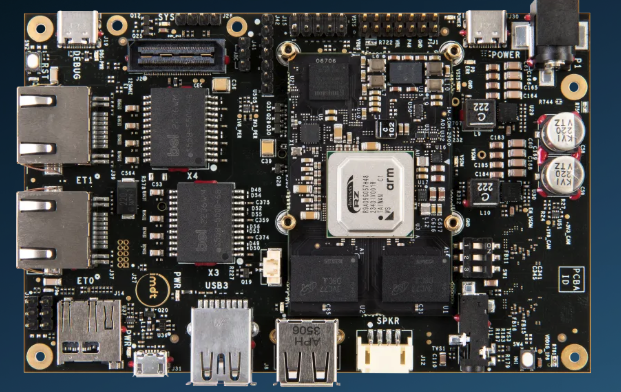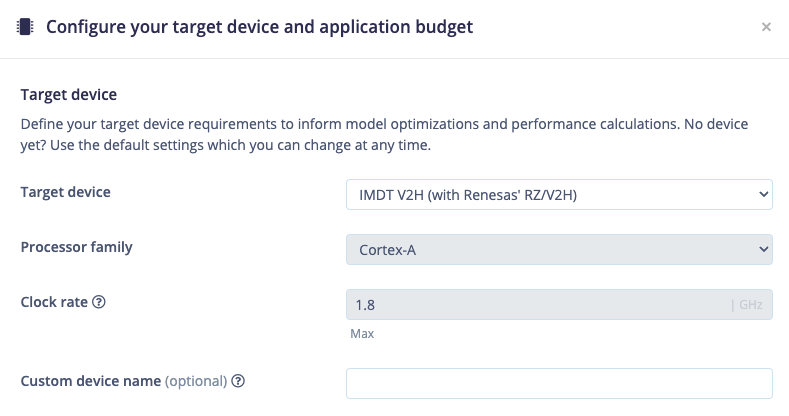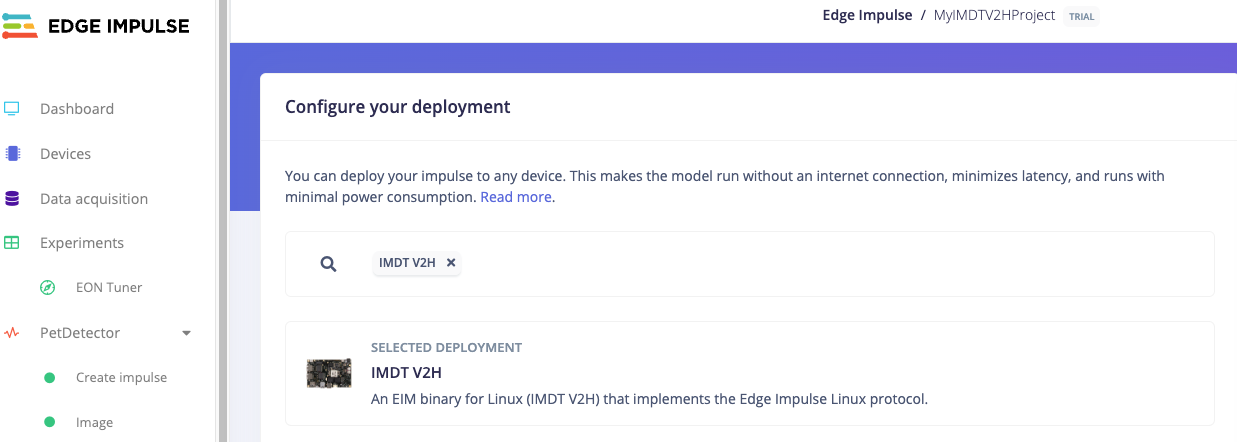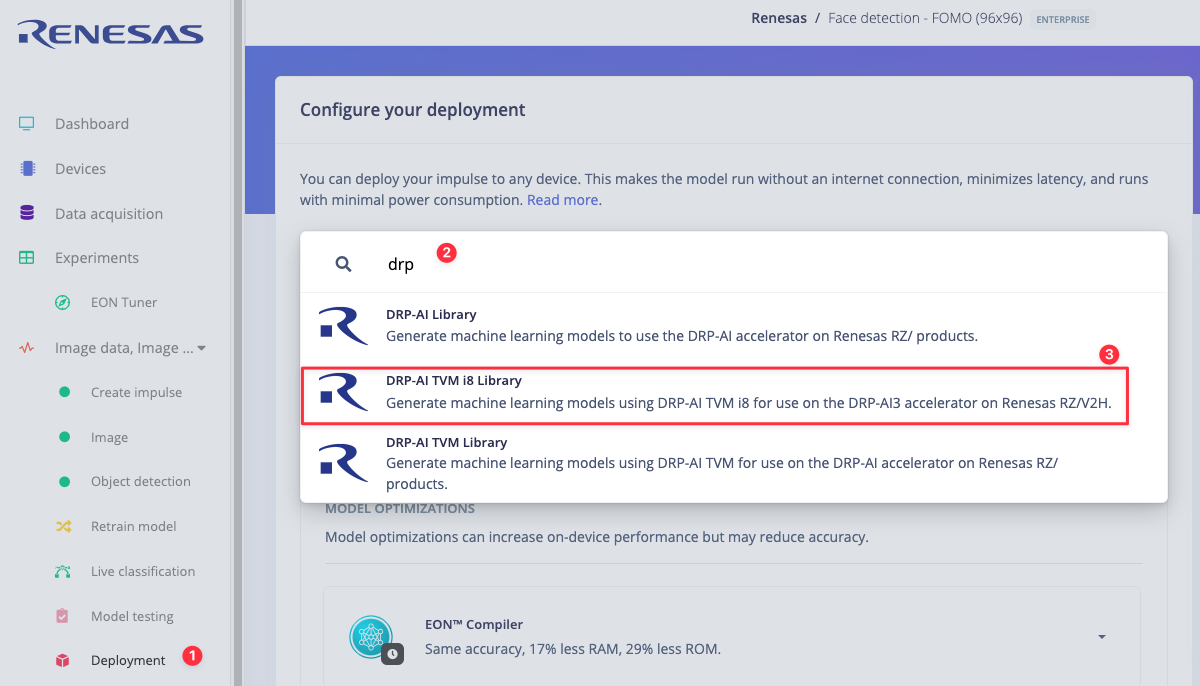
IMDT RZ/V2H
Installing dependencies
Yocto image preparation/patch/build for IMDT V2H
Renesas provides Yocto build system to build all the necessary packages and create the Linux image. The Renesas documentation calls out that the build system must be based off of Ubuntu 20.04. The following instructions here outline the necessary steps to setup your build environment. In order to use the Edge Impulse CLI tools, NodeJS v18 needs to be installed into the yocto image that you build. You will need to download the required NodeJS v18 patch here. The following file needs to be downloaded from Renesas (specific versions specified are required):Flash the board
The easiest way to flash and boot the board is through the use of an SD card. The above files from your yocto build contain a “wic” file that can be imaged onto a SD card via popular utilities like Balena Etcher.Post-flashing tasks
Once your IMDT board is running your new image, you will need to complete an additional task. Please perform the following to setup the DRP-AI and TVM SDK:Accessing the board using screen
The easiest way is to connect through serial to the RZ/V2H board using the USB mini b port.
- After connecting the board with a USB-C cable, please power the board.
-
Power on the board: Connect the power cable to the board, switch
SW3ON thenSW2ON. -
Please install
screento the host machine and then execute the following command from Linux to access the board: -
You will see the boot process, then you will be asked to log in:
- Log in with username
root - There is no password
- Log in with username
Installing Edge Impulse Linux CLI
Once you have logged in to the board, please run the following command to install Edge Impulse Linux CLIConnecting to Edge Impulse
With all software set up, run:--clean.
Verifying that your device is connected
That’s all! Your device is now connected to Edge Impulse. To verify this, go to your Edge Impulse project, and click Devices. The device will be listed here.
Device connected to Edge Impulse.
Next steps: building a machine learning model
Currently, all Edge Impulse models can run on the RZ/V2H CPU which is a dedicated Cortex A55. In addition, you can bring your own model to Edge Impulse and use it on the device. However, if you would like to benefit from the DRP-AI3 hardware acceleration support including higher performance and power efficiency, please use one of the following models: For object detection:- Yolov5 (v5)
- FOMO (Faster objects More Objects)
- MobileNet v1, v2

Selecting the target from the training page
Deploying back to device
To run your impulse locally, just connect to your IMDT RZ/V2H and run:eim model that you can use with the above runner as follows:
Go to the deployment page and select:

EIM model for the IMDT RZ/V2H
runner and you will see both the camera feed and the classification results.
DRP-AI TVM i8 library
Since the RZ/V2H benefits from hardware acceleration using the DRP-AI, we provide you with thedrp-ai-tvm-i8 library that uses our C++ Edge Impulse SDK, DRP-AI TVM and models headers that run on the hardware accelerator. If you would like to integrate the model source code into your applications and benefit from the DRP-AI then you need to select the drp-ai-tvm-i8 library.
We have an example showing how to use the drp-ai-tvm-i8 library that can be found in Deploy your model as a DRP-AI TVM i8 library.

DRP-AI TVM i8 library